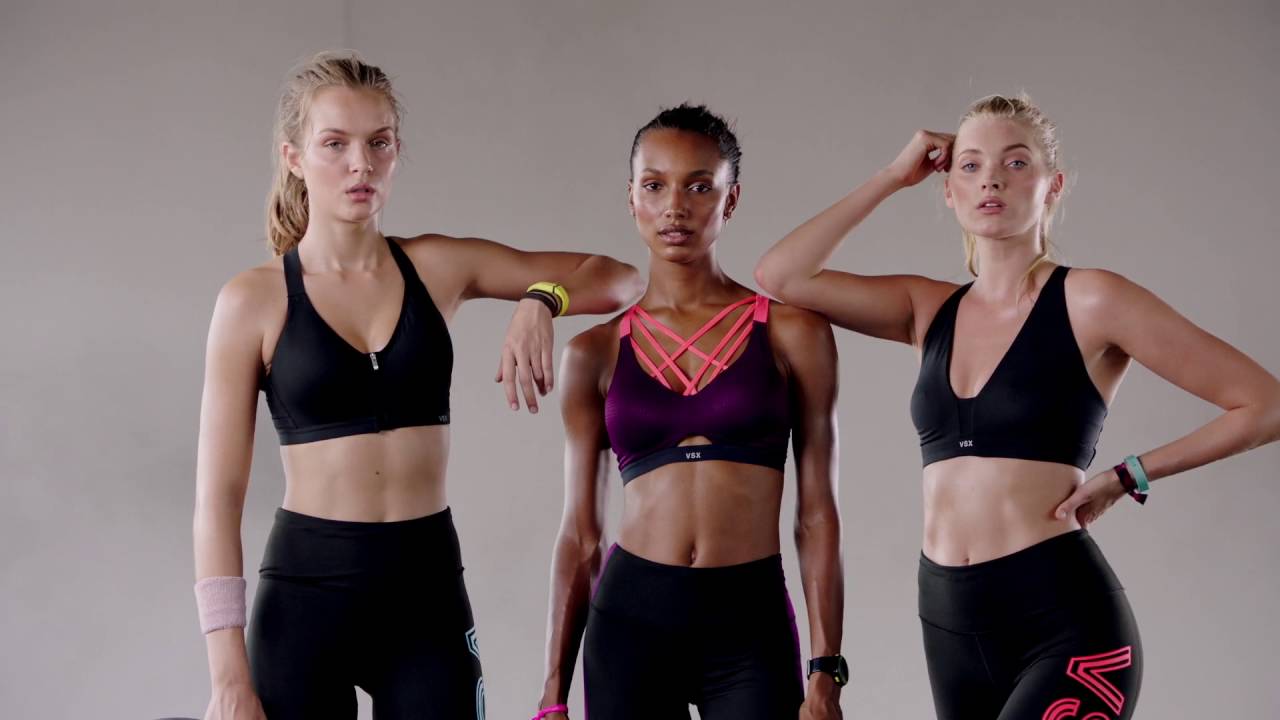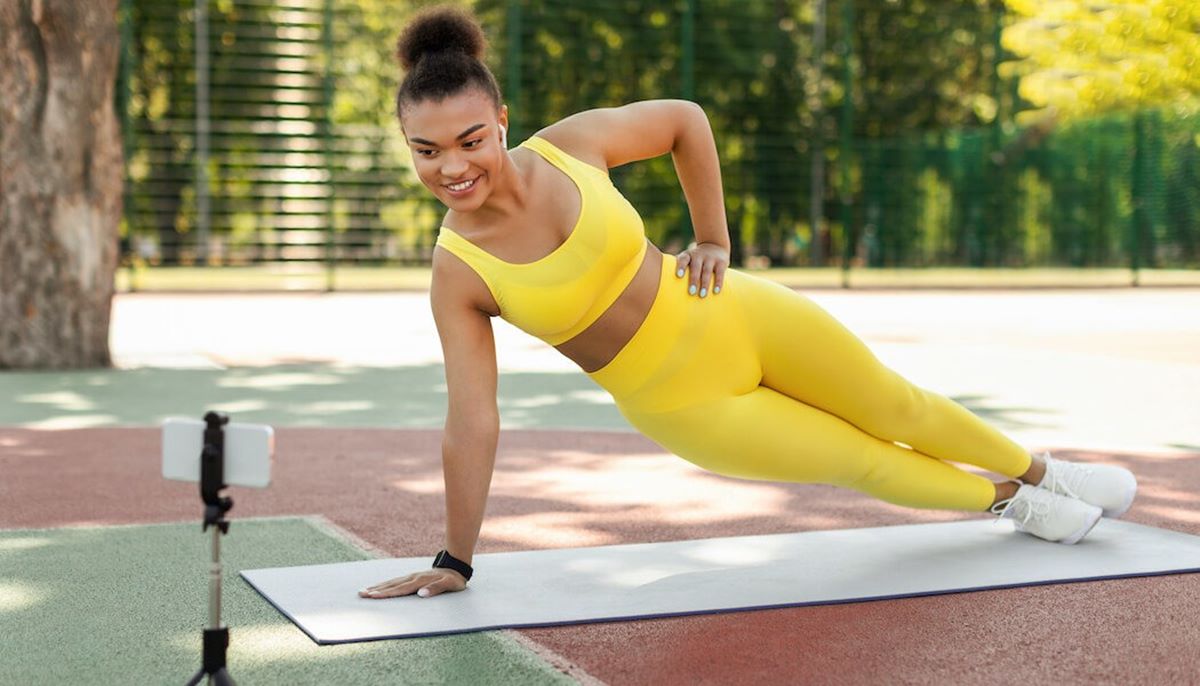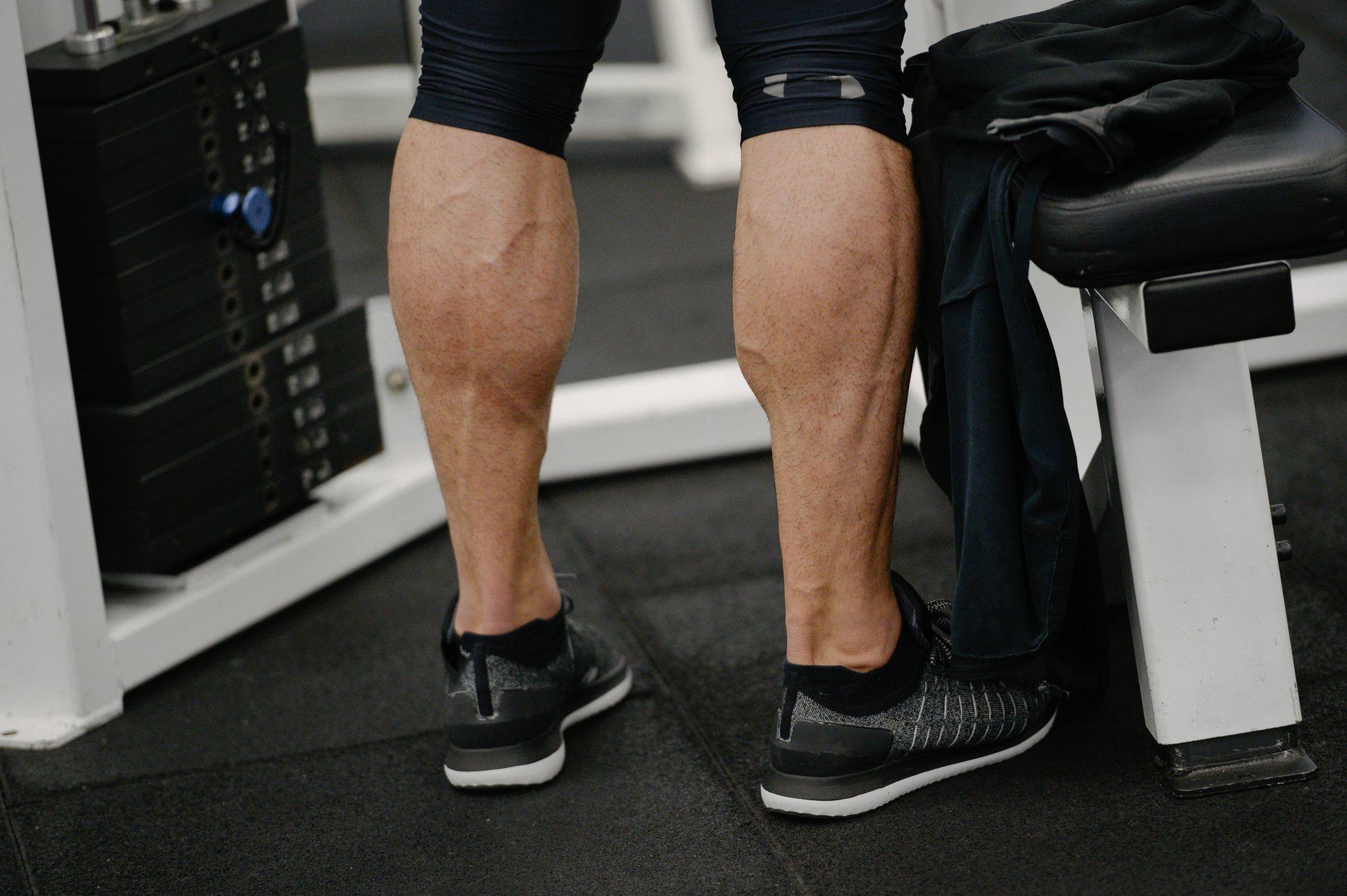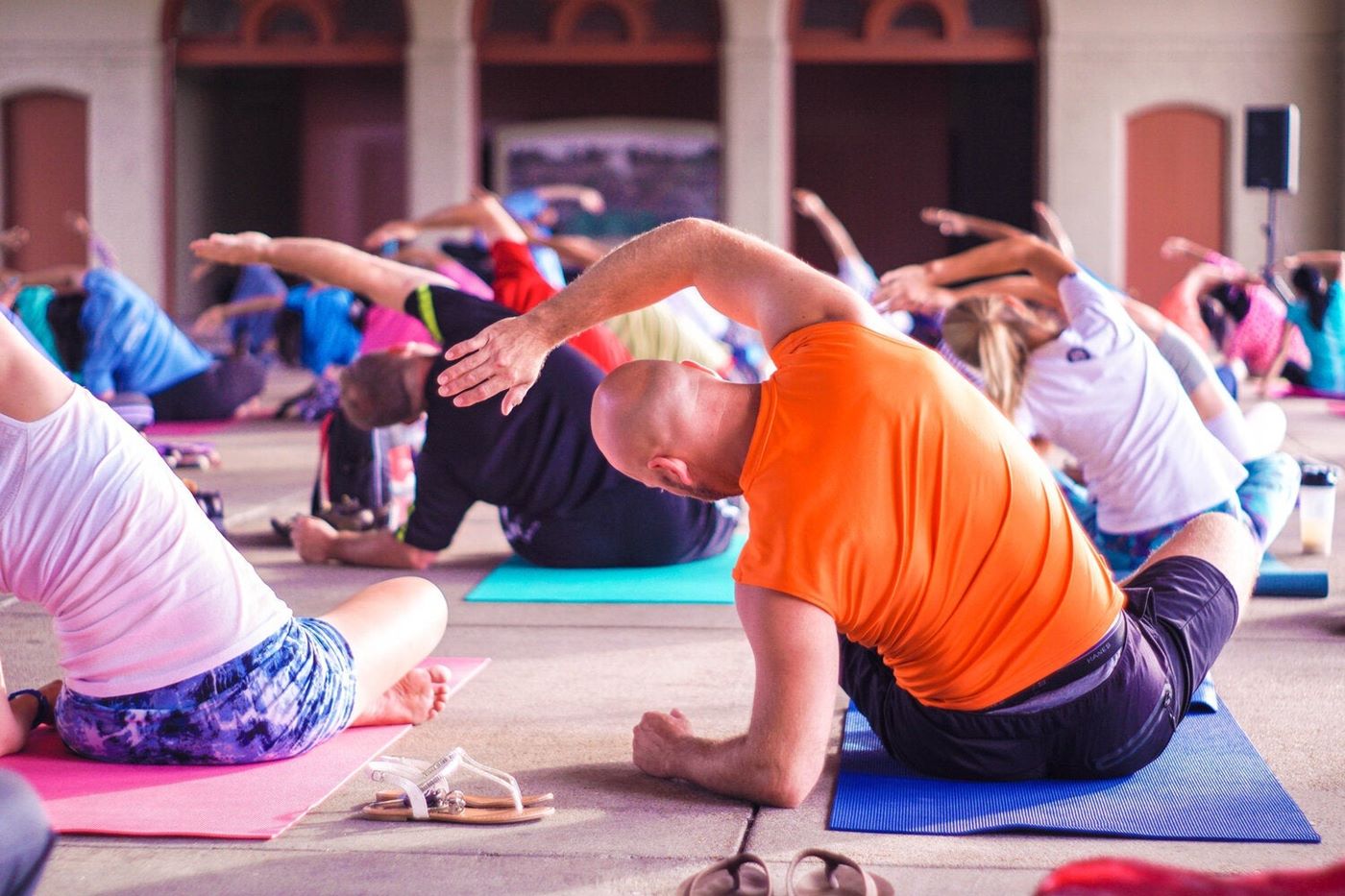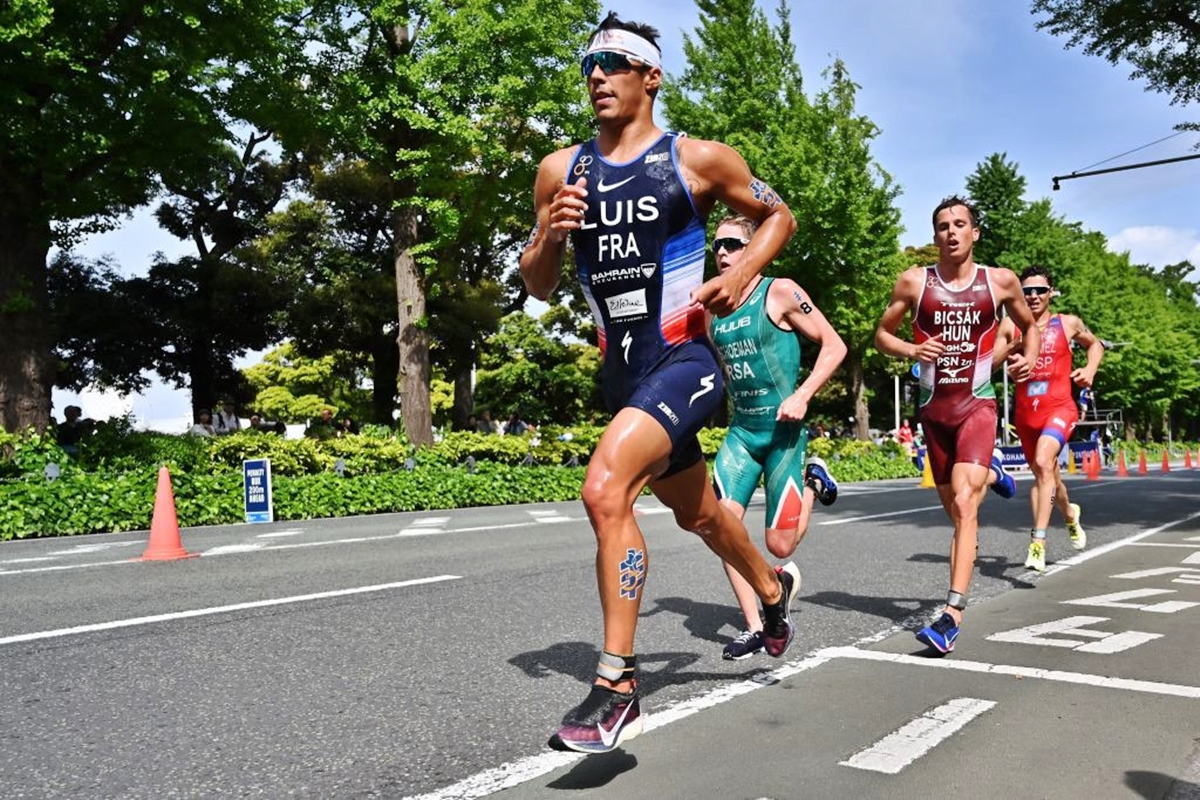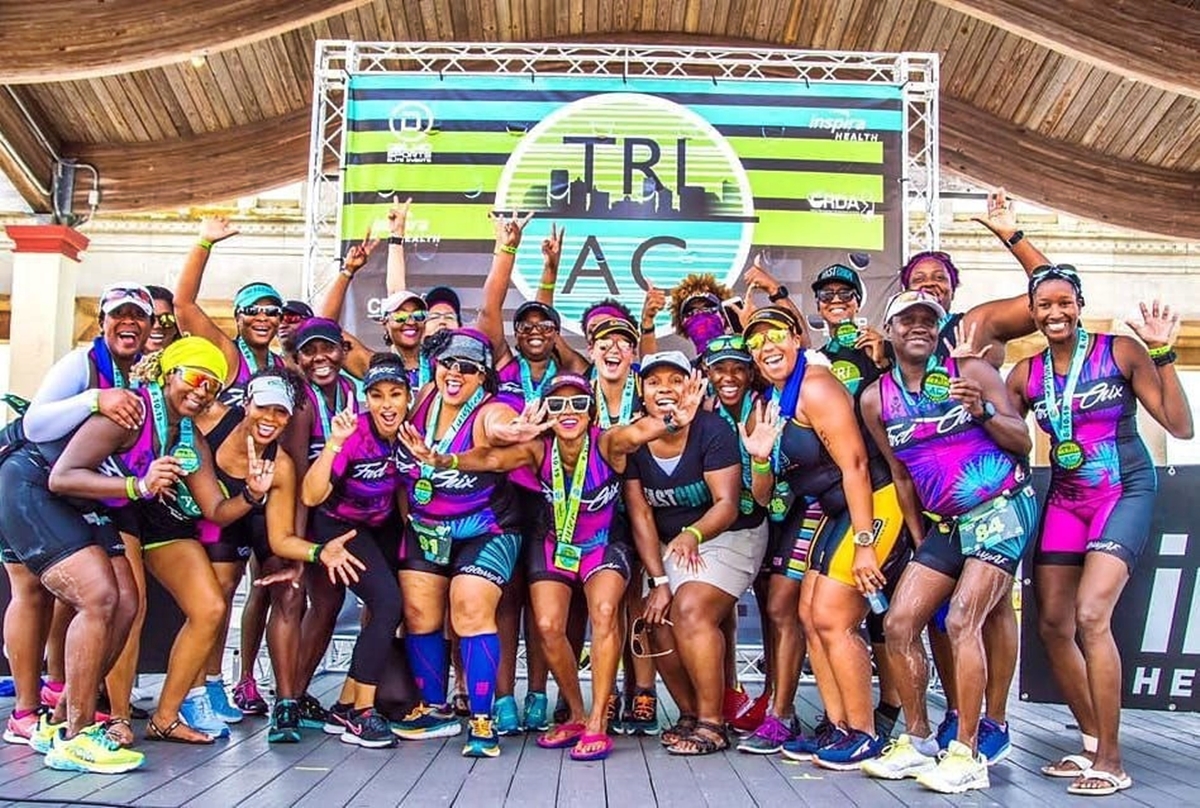

Featured
How To Find Workout Partner
Modified: August 19, 2023
Looking for a workout partner? Learn how to find a featured fitness companion to stay motivated and achieve your fitness goals together.
Introduction
Embarking on a fitness journey can be an exciting and challenging endeavor. Whether you are aiming to lose weight, build muscle, or improve your overall well-being, having a workout partner by your side can make all the difference. A workout partner is someone who shares your fitness goals and joins you in your exercise routines, offering support, motivation, and accountability.
Working out with a partner brings numerous benefits that can enhance your fitness experience and increase your chances of success. Not only does it make your workouts more enjoyable, but it also provides you with a sense of camaraderie and mutual commitment. Research has shown that having a workout partner can improve adherence to exercise routines, boost motivation, and even enhance the effectiveness of your workouts.
Whether you are just starting your fitness journey or looking to shake up your current routine, finding the right workout partner is essential. In this article, we will explore the benefits of having a workout partner, where to look for one, qualities to look for in a potential partner, how to approach someone, establishing goals and schedules together, keeping each other accountable, providing support and motivation, and dealing with challenges and conflicts that may arise. So grab your gym gear and get ready to discover the power of a workout partner!
Benefits of Having a Workout Partner
Having a workout partner can greatly enhance your fitness journey and bring about a multitude of benefits. Here are some of the key advantages of finding a workout partner:
- Motivation: Staying motivated is crucial when it comes to reaching your fitness goals. A workout partner can provide that extra push and encouragement, especially on days when you may not feel like hitting the gym. They can inspire you to push through challenging workouts and keep you accountable to your fitness routine.
- Increased Accountability: When you have a workout partner, you are more likely to stick to your exercise regimen. Knowing that someone is relying on you to show up and work out together helps create a sense of responsibility. This accountability factor can prevent you from skipping workouts and keep you on track towards achieving your goals.
- Improved Technique and Form: Having a workout partner means you have an extra set of eyes to observe your form during exercises. They can provide feedback and help you correct any mistakes or imbalances in your movements. This can minimize the risk of injury and maximize the effectiveness of your workouts.
- Friendly Competition: Exercising with a partner can introduce a healthy level of competition. Pushing each other to do better and achieve more can bring out the best in both of you. This friendly rivalry can push you to go that extra mile, lift heavier weights, or complete more reps than you thought possible.
- Variety in Workouts: Working out with a partner opens up a world of new exercises and workout routines. You can take turns designing workouts, try new fitness classes together, or explore different types of training methods. This variety keeps your workouts exciting and prevents boredom from setting in.
Overall, a workout partner can be a game-changer in your fitness journey. They provide support, share knowledge, and make your workouts more enjoyable. With someone by your side, you’ll be more motivated and accountable, and your fitness progress will soar to new heights.
Where to Look for a Workout Partner
Now that you understand the benefits of having a workout partner, you might be wondering where and how to find one. Here are some places to look for a workout partner:
- Local Gyms or Fitness Centers: Gyms and fitness centers are ideal places to find potential workout partners. Attend group classes, such as spin or yoga, and strike up conversations with like-minded individuals. You may find someone who shares similar fitness goals and is looking for a workout buddy.
- Social Media Fitness Communities: Social media platforms, such as Instagram or Facebook, have thriving fitness communities. Join fitness groups, follow fitness-related hashtags, or engage with fitness influencers. Interacting with others who are passionate about fitness can lead you to find a workout partner in your area.
- Online Fitness Forums and Websites: Explore online fitness forums and websites that have sections dedicated to finding workout partners. Post about your fitness goals and interests, and you may come across someone who aligns with your objectives and wants to team up for workouts.
- Friends or Colleagues: Don’t overlook your own social circle when searching for a workout partner. Reach out to friends, family members, or colleagues who have expressed an interest in fitness. Sharing your goals and asking if they would like to join you can be a great way to strengthen your bond and support each other in your fitness journeys.
- Community Recreation Centers: Local community centers often offer fitness classes and activities. Sign up for a class or program that interests you and interact with fellow participants. You may find someone who is looking for a workout partner and is attending the same classes as you.
Remember, finding a workout partner is all about connecting with someone who shares your fitness goals, is reliable, and has a similar schedule. Keep an open mind and be proactive in your search, and you’ll increase your chances of finding the perfect workout partner to accompany you on your fitness journey.
Qualities to Look for in a Workout Partner
When you’re searching for a workout partner, it’s important to find someone who not only has similar fitness goals but also possesses certain qualities that make for a great partnership. Here are some qualities to look for in a workout partner:
- Commitment: A good workout partner is committed to their fitness journey and shows up consistently for workouts. Look for someone who is dedicated and reliable, as this will ensure that both of you stay accountable to your fitness routines.
- Similar Fitness Level: It’s essential to find a workout partner whose fitness level is similar to yours. This ensures that you can push each other without one person feeling too overwhelmed or held back. Having a similar fitness level allows for balanced and effective workouts.
- Positive Attitude: Look for a workout partner who has a positive mindset and brings an uplifting energy to your workouts. Positivity can boost motivation and make the exercise experience more enjoyable. Avoid partnering with someone who frequently complains or brings a negative vibe to your sessions.
- Supportive Nature: A great workout partner is supportive and encouraging. They celebrate your milestones and offer motivation during tough workouts. Look for someone who lifts you up and pushes you to be your best self.
- Similar Schedule: Find a workout partner whose schedule aligns well with yours. It’s important to have compatible availability so that you can coordinate and commit to regular workout sessions together. Similar schedules make it easier to establish a consistent routine.
- Communication Skills: Effective communication is key to a successful workout partnership. Look for someone who can clearly express their fitness goals and preferences. Good communication allows both of you to provide feedback, discuss challenges, and plan your workouts effectively.
- Shared Goals: Aligning with a workout partner who shares similar fitness goals is essential. Whether it’s training for a marathon, building strength, or losing weight, having common objectives creates a strong sense of camaraderie and mutual motivation.
- Compatibility: Lastly, consider factors such as personality, interests, and workout preferences. Finding a workout partner you get along with and share common interests can make your workouts more enjoyable and enhance the overall experience.
Remember, the right workout partner can make a significant difference in your fitness journey. Take the time to find someone who possesses these qualities, as they contribute to a supportive and fruitful workout partnership.
How to Approach Someone to be Your Workout Partner
Approaching someone to be your workout partner may seem intimidating, but with the right approach, you can find a willing and enthusiastic partner. Here are some steps to help you in approaching someone to be your workout partner:
- Observe and Identify: Take notice of individuals at your gym, fitness classes, or social circles who seem motivated and consistent in their workouts. Look for someone who shares similar fitness goals and interests.
- Break the Ice: Start by striking up a casual conversation with the person you have identified. Talk about your common interests, ask about their fitness routine, or compliment their progress. Building a rapport will lay the foundation for a potential workout partnership.
- Express your Interest: Once you have established a connection, express your interest in finding a workout partner. Emphasize the benefits of having a partner, such as increased motivation and accountability.
- Share your Goals: Be open about your fitness goals and why you think partnering up would be beneficial. Discuss what you hope to achieve, and listen attentively to their goals as well. This helps establish shared objectives and a sense of mutual understanding.
- Propose a Trial Workout: Instead of immediately committing to a long-term partnership, suggest trying out a workout session together. This allows both of you to gauge compatibility, work ethic, and workout preferences before making a more formal commitment.
- Discuss Logistics: If the trial workout goes well, discuss schedules, preferred workout locations, and exercise preferences. Ensure that both of your schedules align and that you can commit to regular workouts. Finding a convenient arrangement is crucial for maintaining consistency.
- Establish Clear Expectations: Have an open conversation about what you expect from each other as workout partners. Discuss areas like timely communication, punctuality, and support during workouts. Establishing clear expectations helps avoid misunderstandings and cultivates a healthy workout partnership.
- Plan and Track Progress: Once you’ve established a workout partnership, create a plan together. Set short-term and long-term goals, and track your progress. This provides motivation and a sense of direction as you work towards your individual and shared fitness objectives.
- Stay Flexible and Supportive: Lastly, remain flexible and supportive of each other’s schedules and progress. Life may throw curveballs occasionally, and adjustments may be needed. Offer each other motivation and understanding during challenging times to keep each other on track.
Remember, approaching someone to be your workout partner is about building a connection, sharing goals, and finding compatibility. Be genuine, confident, and open in your approach, and you will increase your chances of finding a great workout partner who will join you on your fitness journey.
Establishing Goals and Schedules with Your Workout Partner
When you find a workout partner, it’s important to establish clear goals and schedules to ensure a successful and productive partnership. Here are some steps to help you establish goals and schedules with your workout partner:
- Discuss Individual Goals: Begin by discussing and understanding each other’s individual fitness goals. This includes what you want to achieve in terms of strength, endurance, weight loss, or overall health. Make sure you have a clear picture of what both of you are striving for.
- Identify Shared Goals: Look for common areas of interest or objectives that align with both of your individual goals. These shared goals will form the foundation for your joint workouts and provide a sense of teamwork and camaraderie.
- Create a Goal Timeline: Establish a timeline to achieve your goals. Break them down into smaller milestones and set a realistic timeline for each. This will help you stay focused and motivated, as you can track your progress along the way.
- Develop a Workout Plan: Based on your goals, work together to create a workout plan that incorporates exercises and routines that will help you progress towards those goals. Consider the duration and frequency of your workouts, as well as the specific exercises you will perform.
- Set Schedules and Commitment Levels: Discuss your availability, preferences, and commitments outside of workouts. Find a time or times during the week that work well for both of you and commit to those scheduled workout sessions. Consistency is key in achieving results.
- Be Flexible: Life can be unpredictable, and schedules may need to be adjusted from time to time. It’s important to maintain flexibility and adaptability. Communicate openly with your workout partner and be willing to make necessary adjustments to accommodate each other’s commitments.
- Track Progress Together: Regularly track and monitor your progress together. This can be done through measurements, progress photos, or even journaling your workouts. Celebrate milestones achieved and offer support and encouragement during challenging times.
- Reassess and Adjust: As you progress towards your goals, take the time to periodically reassess and adjust your plans. This allows you to ensure that your workouts remain aligned with your evolving goals and to make any necessary modifications based on your progress.
- Communicate and Provide Feedback: Effective communication is crucial in a workout partnership. Regularly update each other on how you’re feeling, discuss any challenges or concerns, and provide feedback on the workouts. This open and honest communication fosters collaboration and helps you make necessary improvements.
Remember, establishing goals and schedules with your workout partner lays the groundwork for a successful partnership. By setting clear objectives, creating a plan, and maintaining open communication, you can propel yourselves towards achieving your fitness goals together.
Keeping Each Other Accountable
Accountability is a key ingredient for success in any fitness journey, and having a workout partner can significantly enhance your ability to stay on track. Here are some strategies to help you and your workout partner keep each other accountable:
- Establish Clear Expectations: From the beginning, have a conversation about your expectations for accountability. Discuss how you want to hold each other accountable and what level of support you need. This sets the foundation for a mutual understanding of each other’s responsibilities.
- Set Regular Check-Ins: Schedule regular check-ins to assess progress, discuss challenges, and provide support. This can be done weekly or biweekly, depending on what works best for both of you. During these check-ins, discuss any setbacks or obstacles you encountered, as well as strategies to overcome them.
- Use Technology: Leverage technology to stay connected and accountable. Share your workout schedules and progress digitally, using fitness tracking apps or shared Google calendars. Consider sharing photos of your meals or workout accomplishments to maintain a visual record of your efforts.
- Create Shared Goals: Establish shared goals and milestones that you can work towards together. By having a common objective, you can motivate and hold each other accountable. Celebrate each milestone achieved, and use them as motivation to push forward.
- Track Progress Together: Regularly track and document your progress together. This can include measurements, body composition changes, or fitness test results. Seeing the tangible evidence of your progress can help keep you both motivated and accountable to your fitness goals.
- Plan Workouts in Advance: Plan your workouts in advance, whether it’s for the week or the month. By mapping out your exercise sessions, you have a clear roadmap to follow and less room for procrastination or excuses. Share your planned workouts with your partner to help each other stay on track.
- Set Consequences and Rewards: Establish consequences for not following through on commitments, such as skipping a workout or deviating from your nutrition plan. Conversely, create rewards for meeting milestones or consistently showing up for your workouts. This accountability system can provide added motivation to stay on track.
- Be Honest and Transparent: Be open and honest with each other about your progress, challenges, and any setbacks you encounter. Transparency builds trust and allows for better support and accountability. Don’t be afraid to ask for help or share when you’re struggling.
- Offer Encouragement and Support: As workout partners, your role goes beyond accountability. Offer continuous encouragement, support, and motivation to each other. Celebrate each other’s successes and provide a helping hand during challenging times. Knowing that you have someone cheering you on can make a significant difference in staying accountable.
Remember, accountability is a two-way street. Both you and your workout partner must actively participate in holding each other accountable. By implementing these strategies and maintaining open communication, you can create a strong accountability system that supports your fitness goals and ensures long-term success.
Supporting and Motivating Each Other
Having a workout partner not only provides accountability but also offers invaluable support and motivation throughout your fitness journey. Here are some ways you and your workout partner can support and motivate each other:
- Celebrate Achievements: Recognize and celebrate each other’s achievements, no matter how small. Whether it’s hitting a new personal record, losing weight, or completing a challenging workout, acknowledge and praise each other’s progress. This positive reinforcement boosts motivation and strengthens your partnership.
- Be a Cheerleader: Offer continuous encouragement and be a cheerleader for your workout partner. Offer words of affirmation, motivate them during tough workouts, and remind them of their capabilities. A supportive and uplifting attitude goes a long way in keeping each other motivated.
- Provide Constructive Feedback: Offer constructive feedback to help each other improve. This can relate to form during exercises, technique, or even finding ways to make workouts more challenging. Be gentle and supportive in your delivery, and remember that the goal is to help each other grow.
- Share Knowledge: Share your fitness knowledge and experiences with your workout partner. Offer tips, suggest new exercises, or recommend resources such as books or podcasts. By sharing your knowledge, you both can expand your fitness horizons and continue to learn and grow together.
- Be a Listening Ear: Sometimes, your workout partner may encounter frustrations or challenges. Be there to listen and provide support. Let them vent, offer empathy, and provide a safe space to express their feelings. Your presence and understanding can make a tremendous difference in their motivation and determination.
- Work Towards Goals Together: Set shared goals or milestones and work towards them together. Design workout plans that align with these goals and hold each other accountable to put in the necessary effort to achieve them. Your shared commitment and progress will motivate and inspire one another.
- Try New Exercises or Fitness Classes: Keep your workouts interesting and exciting by trying new exercises or fitness classes together. Explore different training methods or activities that both of you find enjoyable. This adds variety to your routines and prevents boredom from creeping in.
- Offer Support Outside of Workouts: Be supportive outside of your workout sessions as well. Share healthy recipes, recommend nutritious foods, or discuss strategies for managing stress. By offering support in all aspects of wellness, you reinforce healthy lifestyle habits and help each other maintain balance.
- Be Accountable to Each Other: Act as each other’s accountability partner beyond just workouts. Encourage and remind each other to follow through with nutrition plans, get enough rest, and manage overall well-being. This holistic approach to support ensures that you both stay on track towards your goals.
Remember, the support and motivation you provide to each other as workout partners can make a significant impact on your individual and shared success. By being each other’s cheerleader, mentor, and confidant, you create an uplifting and empowering environment that propels both of you towards achieving your fitness goals.
Dealing with Challenges and Conflicts
Even in the strongest workout partnerships, challenges and conflicts are bound to arise. It’s important to address these issues proactively and find constructive solutions. Here are some strategies for effectively dealing with challenges and conflicts with your workout partner:
- Communicate Openly: Create an environment of open communication where both of you feel comfortable expressing concerns or frustrations. Avoid bottling up emotions and address conflicts in a timely and respectful manner. Honest and transparent communication is key to finding resolutions.
- Take Time to Listen: Practice active listening when your workout partner expresses their concerns or viewpoints. Try to see from their perspective and understand their emotions. Listening attentively allows for a deeper understanding of each other’s needs and concerns.
- Focus on Solutions: When conflicts arise, shift the focus from blame to finding solutions. Work together to brainstorm possible resolutions that address both parties’ concerns. Be open-minded and willing to compromise for the benefit of the partnership.
- Seek Mediation if Necessary: In some instances, it may be helpful to seek the guidance of a neutral third party. A fitness professional or a trusted mutual friend can act as a mediator to facilitate productive discussions and help find resolutions.
- Practice Empathy and Understanding: Empathy plays a crucial role in resolving conflicts. Put yourself in your workout partner’s shoes and try to understand their perspective. Showing empathy can create a safe space for open dialogue and foster a sense of unity.
- Set Boundaries: Establish clear boundaries and expectations from the beginning of your workout partnership. Clearly define what is acceptable and what is not. This prevents misunderstandings and reduces the likelihood of conflicts arising.
- Find Common Ground: In times of conflict, identify the common goals and interests that brought you together in the first place. Remind yourselves of the shared journey you’re on and the mutual benefits of resolving conflicts and continuing to support each other.
- Take a Break if Needed: If conflicts become overwhelming and difficult to resolve, it may be necessary to take a temporary break from your workout partnership. Use this time to reflect on the issues at hand and determine if and how you can move forward in a constructive way.
- Learn from Challenges: Challenges and conflicts can serve as learning experiences. Reflect on the issues that arise and identify areas where growth is needed. Use these challenges as opportunities to strengthen your partnership and improve your communication and problem-solving skills.
- Revisit and Reinforce Your Commitment: During challenging times, remind each other of your commitment to the partnership. Reinforce the importance of supporting each other and working together to overcome obstacles. Refocusing on your shared goals and values can help navigate through conflicts successfully.
Remember, conflicts are a natural part of any relationship, including workout partnerships. By addressing challenges with open communication, empathy, and a willingness to find solutions, you can transform conflicts into opportunities for personal and partnership growth.
Conclusion
Having a workout partner can greatly enhance your fitness journey, providing you with support, motivation, and accountability. The benefits of finding a workout partner are numerous, including increased motivation, improved accountability, enhanced technique, friendly competition, and a greater variety in workouts.
When looking for a workout partner, consider local gyms, fitness centers, social media fitness communities, online forums, friends, or community recreation centers. Look for someone who is committed, has a similar fitness level, possesses a positive attitude, and shares similar goals and schedules.
Once you have found a workout partner, it’s important to establish clear goals and schedules together. Work on creating a workout plan, tracking your progress, and checking in regularly. Hold each other accountable, offer support and motivation, and celebrate each other’s achievements.
However, challenges and conflicts may arise in any partnership. It’s important to communicate openly, listen to each other, focus on finding solutions, practice empathy, and establish clear boundaries. Seek mediation if needed and learn from challenges to strengthen your partnership.
In conclusion, a workout partner can make a significant difference in your fitness journey. With a partner by your side, you’ll have the support, motivation, and accountability to achieve your goals. So don’t hesitate to find your perfect workout partner and start reaping the benefits of a partnership that will take your fitness journey to new heights!
